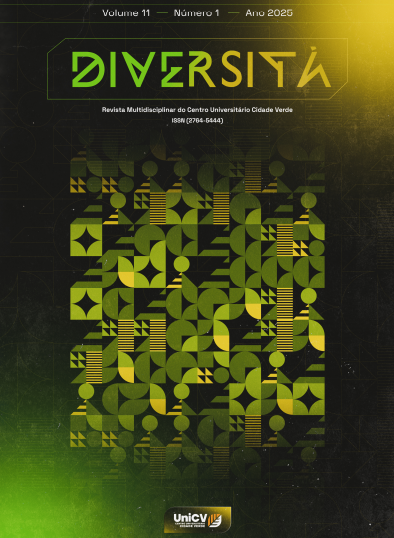ARTIFICIAL INTELLIGENCE AND ITS CONTRIBUTIONS TO THE TEACHING-LEARNING PROCESS
Keywords:
Artificial Intelligence, Teaching-learning process, Adaptive Learning, Intelligent Tutoring Systems (ITS)Abstract
It In the educational field, Artificial Intelligence (AI) is beginning to demonstrate its potential, driven by technological advances and the growing volume of available data. The application of AI tools in the teaching-learning process emerges as a promising opportunity for improving the quality and personalization of education. Despite the enthusiasm surrounding the topic, several challenges still need to be overcome. Schools and universities represent a significant part of these difficulties, as they still face obstacles to integrating these new technologies effectively. In this context, the objective of this study is to analyze the possible contributions of AI in the teaching-learning process, highlighting its impacts on the environments and routines of the educational environment. To this end, bibliographic research and documentary analysis were adopted as methodological procedures, with a qualitative approach, developed from multiple sources and the application of different technological tools based on Artificial Intelligence. Among the results obtained, it is worth highlighting that, in the field of education, AI has promoted significant impacts on relevant aspects, such as support for teachers and the inclusion of students with special educational needs. AI-assisted tools, such as Intelligent Tutoring Systems (ITS), are examples of how this technology has been applied to improve both teaching and learning. It is essential that, both in the development and implementation of AI in the educational context, ethical principles and social responsibility are observed, aiming to mitigate risks and share the potential benefits of this innovation.
References
CHEATHAM, B.; JAVANMARDIAN, K.; SAMANDARI, H. Confronting the risks of artificial intelligence. McKinsey, 2019. Disponível em: https://www.sipotra.it/wp-content/uploads/2019/05/Confronting-the-risks-of-artificial-intelligence.pdf. Acesso em: 12 out. 2024.
Chiavenato, I. Introdução à Teoria Geral da Administração (7ª ed.). Rio de Janeiro: Elsevier. 2003.
MCCARTHY, J.; MINSKY, M. L.; ROCHESTER, N.; SHANNON, C. E. A Proposal for the Dartmouth Summer Research Project on Artificial Intelligence, August 31, 1955. AI Magazine, [S. l.], v. 27, n. 4, p. 12, 2006. DOI: 10.1609/aimag.v27i4.1904. Disponível em: https://ojs.aaai.org/aimagazine/index.php/aimagazine/article/view/1904. Acesso em: 11 jun. 2025.
MCCULLOCH, W. S.; PITTS, W. A logical calculus of the ideas immanent in nervous activity. Bulletin of Mathematical Biophysics, v. 5, p. 115-133, 1943. Disponível em: https://doi.org/10.1007/BF02478259. Acesso em: 17 jan. 2025.
PAPERT, S. The children's machine: rethinking school in the age of the computer. New York: Basic Books, 1993.
PARNAS, David Lorge. The real risks of artificial intelligence. Communications of the ACM, v. 60, n. 10, p. 27-31, out. 2017. Disponível em: https://cacm.acm.org/opinion/the-real-risks-of-artificial-intelligence/. Acesso em: 21 fev. 2025.
RUSSELL, S., NORVIG, P. Artificial Intelligence: A Modern Approach (3rd ed.). Rio de Janeiro: Elsevier, 2013..
TURING, Alan M. Computing machinery and intelligence. Mind, v. 59, n. 236, p. 433-460, out. 1950. Disponível em: https://academic.oup.com/mind/article-abstract/LIX/236/433/986238?redirectedFrom=fulltext&login=false. Acesso em: 08 fev. 2025.
Downloads
Published
Issue
Section
License
Copyright (c) 2025 DIVERSITÀ: Revista Multidisciplinar do Centro Universitário Cidade Verde

This work is licensed under a Creative Commons Attribution 4.0 International License.






